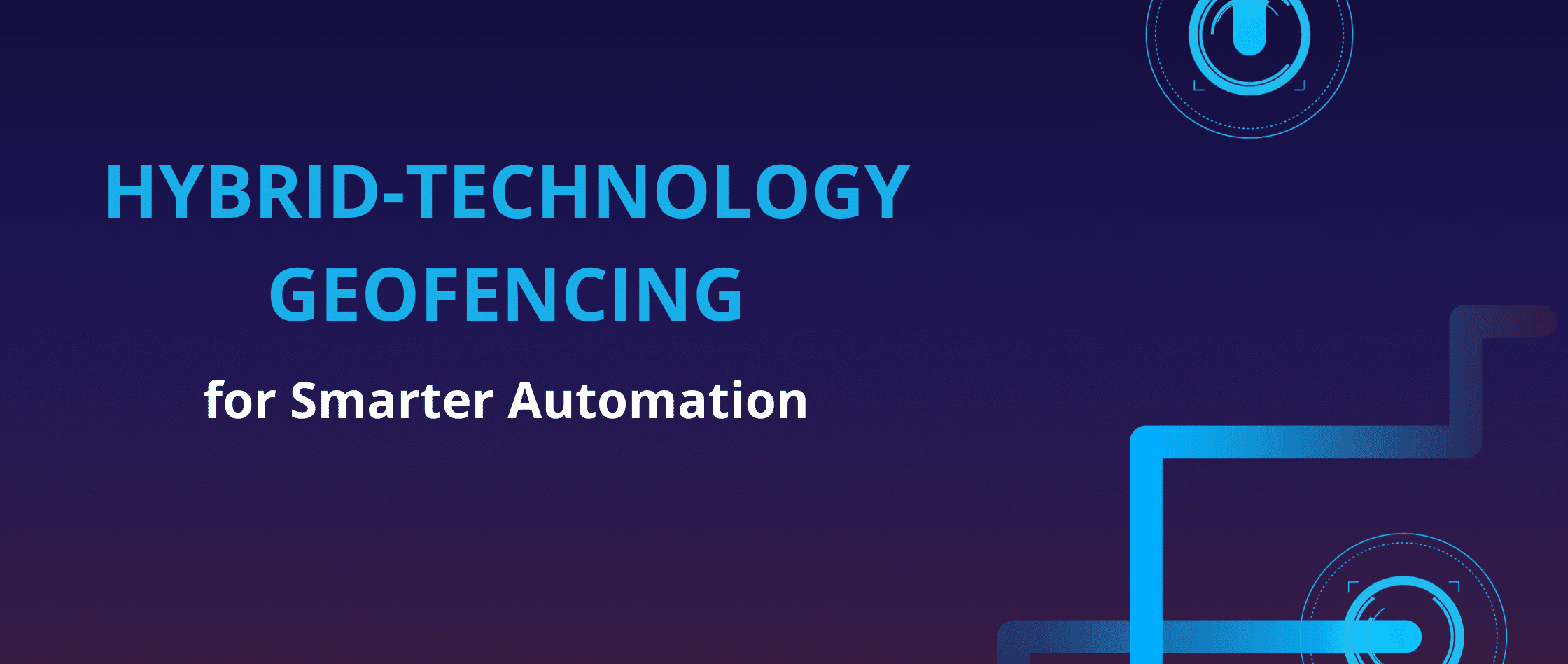Location technologies are transforming industries by enabling automation, efficiency, and real-time decision-making. Geofencing plays a central role in this transformation. By creating virtual boundaries, it can trigger automated actions, send alerts, and track the movement of assets with precision. Yet, most forward-thinking companies have already understood the immense value that real-time location data insights bring for automation, operational efficiency, and decision-making. To fully unlock this potential, hybrid-technology geofencing is becoming essential — enabling geofencing to function reliably across different tracking systems.
But here’s the challenge: Geofencing has traditionally been tied to single-technology frameworks. In industrial environments, companies often rely on multiple tracking and proximity systems — such as RFID, BLE, UWB, and GPS — for different use cases. If geofencing is limited to just one of them, it restricts scalability, flexibility, and operational efficiency. In this article, we’ll explore why geofencing is a critical enabler for process automation — and how DeepHub® provides a future-proof solution for seamless location-based automation.
What is Geofencing?
Geofencing is a virtual boundary set around a specific area using location technology. When an object or person enters or exits the perimeter, it can trigger automated actions such as sending alerts (e.g., notifying security if an asset leaves a restricted area), updating systems (e.g., logging a delivery’s arrival in warehouse software), or initiating workflows (e.g., automatically unlocking a gate for an authorized vehicle).
Geofencing can be applied in both indoor and outdoor environments. However, modern industrial environments require geofencing to work seamlessly across multiple tracking systems. Companies often use a combination of technologies – RFID for access control, UWB for high-precision tracking, BLE for cost-efficient localization, and GPS for fleet management. Without an integrated approach, geofencing remains fragmented and unreliable across different areas of operations, limiting automation potential.
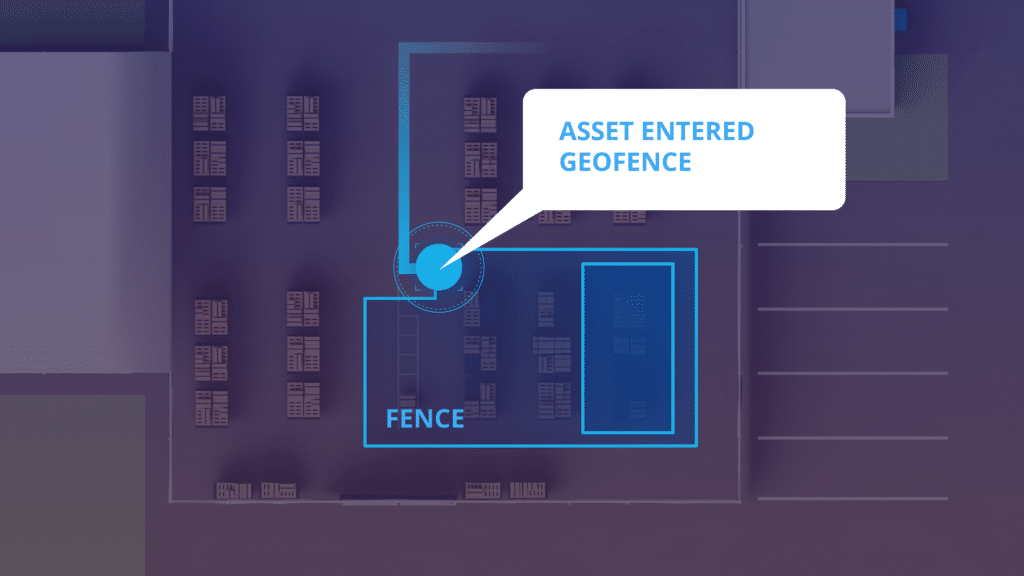
The Strategic Advantage of Hybrid-Technology Geofencing
Traditional geofencing solutions often operate in silos, limiting their effectiveness to specific environments or technologies. However, businesses today require seamless, technology-agnostic solutions that adapt to dynamic operations.
This is where DeepHub® is the ultimate enabler of geofencing-based automation. As the premier omlox-compliant middleware, DeepHub® unifies multiple locating technologies into a single, cohesive geofencing engine—ensuring seamless automation and interoperability across UWB, GPS, BLE, RFID, and more.
With DeepHub®, companies gain:
• Scalability Across Locations: Ensures consistent geofencing rules across single sites or global operations.
• Seamless Multi-Technology Integration: Enables smooth tracking across all location technologies for maximum efficiency.
• Operational Resilience: Minimizes downtime by reducing reliance on any single technology.
• Precision & Automation: Enhances accuracy, reduces false alarms, and optimizes workflows.
• Tolerance Area Mechanism: Prevents unintended triggers by ensuring reliable geofencing for both entry and exit scenarios.
With DeepHub®, geofencing becomes a powerful tool for automation, operational efficiency, and full visibility across industrial settings.
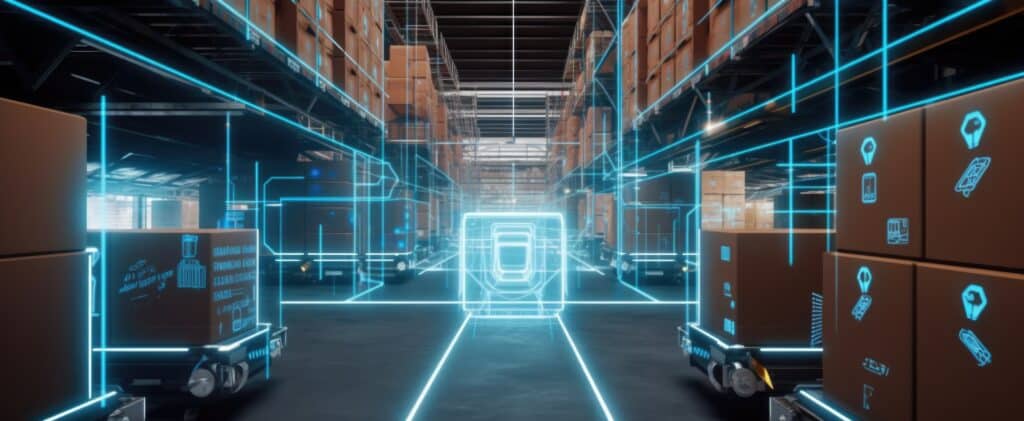
Hybrid-Technology Geofencing in Action: Key Use Cases
Building on the examples we’ve explored, we now take an even deeper dive into Spatial AI by focusing on three of the most important Geofencing enables automation across a wide range of industries. Below are some of the most impactful applications:
1. Automated Goods Receiving
When new shipments arrive at a warehouse, geofences can detect the truck’s arrival at the docking station. The system triggers an alert to warehouse staff, updates inventory status, and prepares automated unloading workflows—saving time and reducing human intervention.
• Trigger: Truck enters the geofence at the docking station.
• Result: Notification to warehouse management system (WMS) and preparation for automated unloading.
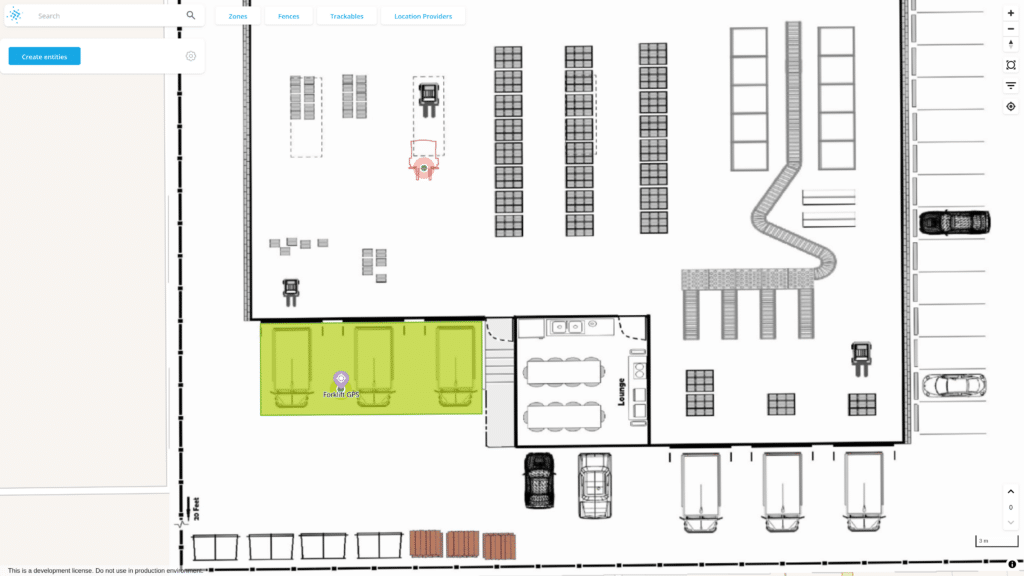
2. Employee Safety Zones
Heavy machinery and AGVs (Automated Guided Vehicles) can pose a safety risk to employees. By using geofences, the system can detect when workers enter hazardous zones and trigger warning lights, sounds, or BLE wristwatch alerts to reduce accident risks.
• Trigger: Worker enters geofenced danger zone.
• Result: Triggers visual/audio alerts and notifies fleet management systems.
3. Asset Protection in High-Security Areas
In high-security areas, such as data centers or R&D labs, geofences can detect unauthorized entry or the movement of critical assets. If a tagged object (like a laptop or server) leaves the geofence, security teams are notified immediately.
• Trigger: Unauthorized device leaves geofenced area.
• Result: Sends security alert and logs the event.
4. Fleet Tracking & Outdoor-Indoor Transitions
Track fleet movements as they transition from outdoor GPS tracking to indoor BLE or UWB tracking. Seamless, hybrid-technology geofencing ensures continuous visibility from the yard to the shop floor.
• Trigger: Vehicle moves from outdoor geofenced area into indoor facility.
• Result: Automatic switch from GPS tracking to UWB/BLE for continuous visibility.
5. Dynamic Workflows in Smart Factories
Smart factories require dynamic, event-driven workflows. With geofencing, automated workflows such as task assignments, AGV routing, and material replenishment become seamless.
• Trigger: Material cart enters geofenced production area.
• Result: Automation of material delivery instructions and routing of AGVs.
6. Event Logistics and Temporary Geofencing
Events are one of the most dynamic use cases for location tracking. Temporary geofences can be created in minutes, allowing for real-time monitoring of assets, equipment, and personnel—ensuring everything runs smoothly, even in changing environments.
• Trigger: Event attendee enters a restricted geofence area.
• Result: Immediate alert to event coordinators and security personnel.
7. Just-in-Time Production
Hybrid-technology geofencing enables “just-in-time” production, ensuring materials and components arrive at the production line exactly when needed. The system prioritizes tasks and improves production efficiency.
• Trigger: Supply cart enters production geofence.
• Result: Notifies production system to prepare for assembly.
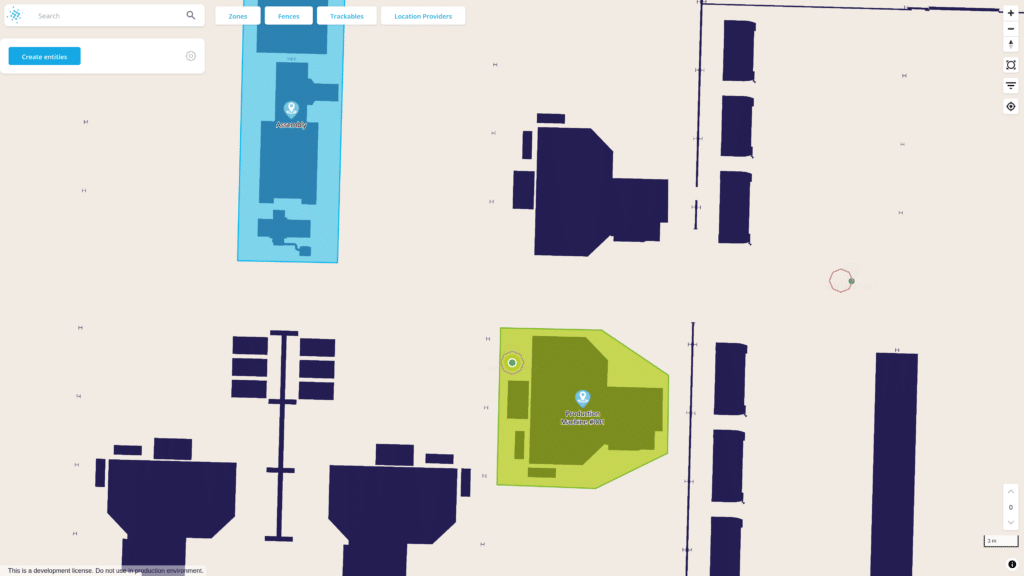
8. Live Tracking of Construction Equipment
Track the location and usage of high-value construction equipment on large, open sites. Geofences notify site managers if an asset is moved outside its designated area, preventing theft or misuse.
• Trigger: Equipment leaves designated geofence.
• Result: Sends alert to site manager and updates asset location history.
Final Thoughts: Geofencing as Cornerstone of Automation
Geofencing is a critical enabler for process automation and optimization, allowing businesses to streamline operations, enhance safety, and improve decision-making.
With DeepHub®, this capability is taken to the next level—transforming geofencing into a fully interoperable, future-proof system that works across all positioning technologies and data sources. By seamlessly integrating location data, companies can achieve holistic visibility and intelligent process automation across their entire operation.
Geofencing is just one part of the bigger picture. DeepHub® provides a next-gen location data management platform that enables the most advanced use cases in the industry through its interoperable power. By enabling seamless geofencing across any locating technology, companies can reduce complexity, increase flexibility, and unlock unprecedented operational control.
Want to see how DeepHub® can transform your geofencing strategy? Get in touch to schedule a personalized demo or learn more about how we’re driving the future of location technology.
